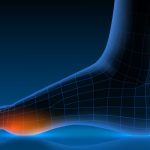PLANTAR FASCIITIS
- Type of Procedure:
- Length of Procedure:
- Anesthesia:
planta fasciitis
What is it?
Plantar fasciitis or “heel spur pain” is the most common cause of pain under the heel. Most patients complain of the pain when they first get out of bed in the morning or when they stand up after being seated. Once they are up and moving around for a while the pain usually improves. The pain is usually located under the center of the heel, but can also extend into the arch.
The average age of patients who develop a plantar fasciitis is 45. It is twice as common in women as men. It also occurs more frequently in people who are overweight or have other comorbidities such as gout, hypothyroidism, rheumatoid et cetera. Plantar fasciitis is caused by small tears in the ligament along the bottom of the foot called the plantar fascia. Only 50% of patients have an actual bone spur underneath the heel bone, and this is NOT believed to be the cause of the pain.
General Recovery Facts
- Stretching exercises for the Achilles tendon and plantar fascia ligament.
- Silicone heel cushions inserted into comfortable walking shoes.
- A night splint or boot to wear to sleep at night.
Before & After Pics
Specific post-operative recovery
Roll the arch of your foot back and forth over a tennis ball to stretch the plantar fascia ligament. (This exercises optional).


